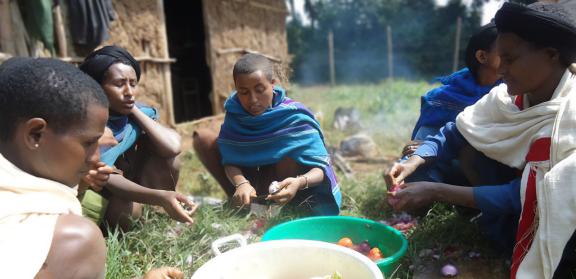
Low quality diets are a leading risk factor for poor nutrition and health throughout the world. However, despite the strong relationship between diet and health, there are important gaps in data on food and nutrient intake. The World Health Assembly does not have diet-related global nutrition targets, and the Sustainable Development Goals do not have harmonized metrics to track changes in global diets and their health and environmental impacts. There is a lack of consensus on indicators that would be valid for use in varied contexts for global monitoring of diet quality. Examples of diet quality metrics include the Minimum Diet Diversity (MDD) for children, Minimum Diet Diversity for Women (MDD-W), Global Dietary Recommendations Score (GDR Score), and the Global Diet Quality Score (GDQS), among others.
USAID recognizes that their Mission and implementing partner staff need tools to be able to adequately measure gaps in food and nutrient intake to inform the design of programs and activities to improve diets. Data on diet quality are important to understand dietary trends, create awareness about diet quality issues, and inform policies and programs to improve diets and health outcomes. However, Mission and implementing partner staff may find it challenging to identify the right tools to assess population food and nutrient needs or monitor and evaluate activities, or use existing tools and guidance without expert assistance. This has resulted in a gap in the information available to design activities that support healthier diet intake. USAID needs to monitor diet quality in its programs and assess if and how programs are positively influencing diet quality in areas where its programs are operating.
Learning, Evidence, and Measurement
USAID Advancing Nutrition is involved in several activities to support learning, evidence, and measurement of diet quality for a range of population groups including women, children, and families. Many of these efforts are cross-team and multi-sectoral technical initiatives. While much of the diet quality work on the project is led by the Food Systems team, the project's Monitoring, Evaluation, and Learning (MEL) also team contributes to advancing measurement methods for diets and nutrient intake.
USAID is an active member and USAID Advancing Nutrition a key supporter of the diet quality working group of the WHO/UNICEF Technical Expert Advisory group on nutrition Monitoring (TEAM), a group formed to advise on improving the quality of nutrition monitoring efforts at all levels. The project has supported efforts to convene top experts and stakeholders on the topic of the measurement of healthy diets to start to build consensus on global indicators of diet quality, namely the WHO/UNICEF TEAM and FAO Technical Consultation on Measuring Healthy Diets held in May 2021.
The project also developed an inventory of available diet assessment tools for USAID Mission staff and implementing partners to identify the most suitable methods, metrics, and tools for measuring diet quality. We have conducted novel analysis of existing data in Malawi to estimate micronutrient adequacy and model food fortification interventions. These efforts help inform large-scale food fortification for urban and rural households vulnerable to malnutrition.
In addition, the MEL team is supporting an analysis to assess the degree to which the diet quality questionnaire national-level sentinel food lists capture foods commonly consumed among sub-national populations in different countries. The team is also supporting work in other project focus area, such as the Social and Behavior Change (SBC), bolstering efforts to promote healthy diets among specific groups, such as women. To access a list of high quality SBC resources on women’s healthy diets, visit this page.